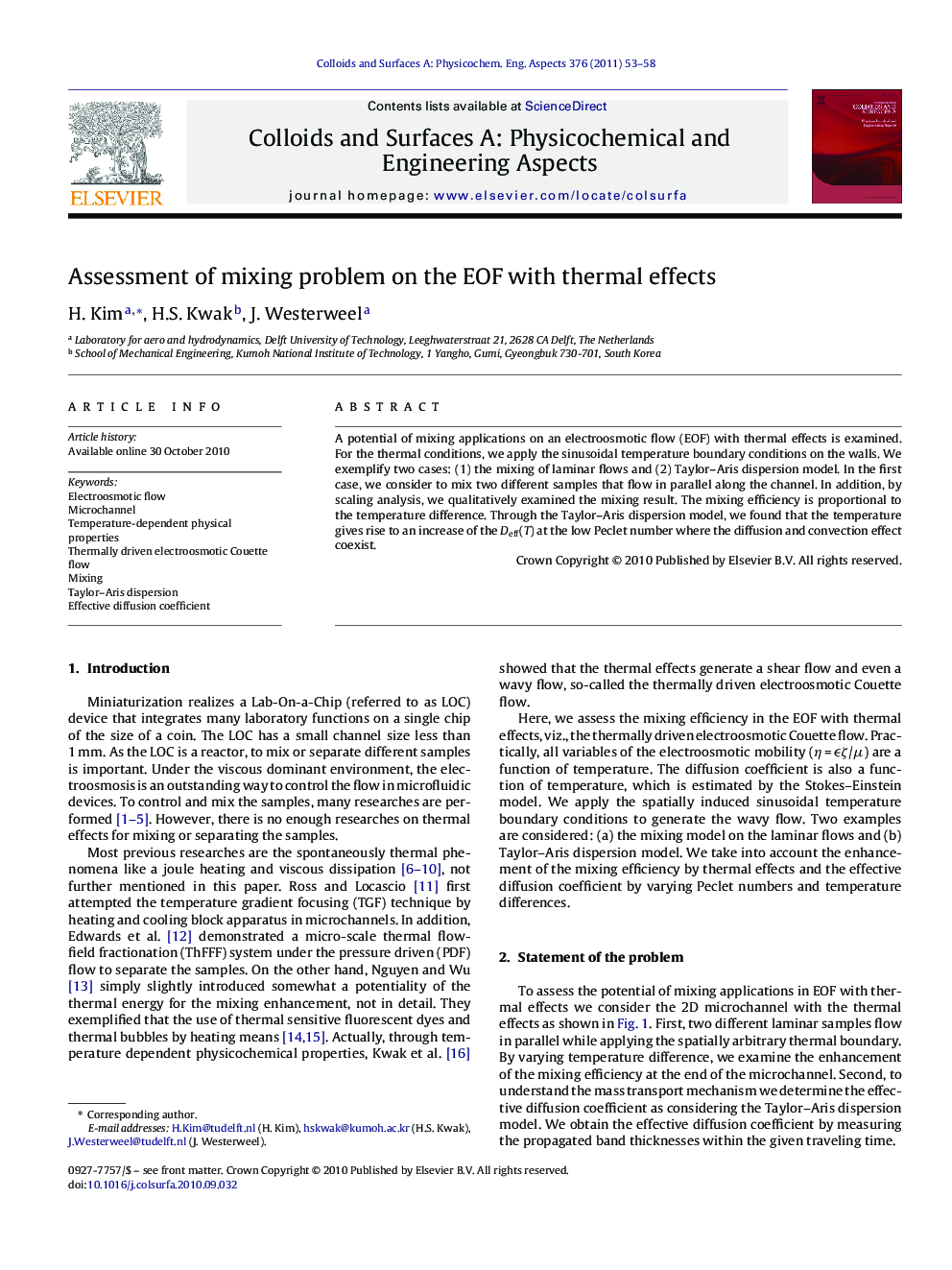| Article ID | Journal | Published Year | Pages | File Type |
|---|---|---|---|---|
| 595032 | Colloids and Surfaces A: Physicochemical and Engineering Aspects | 2011 | 6 Pages |
Abstract
A potential of mixing applications on an electroosmotic flow (EOF) with thermal effects is examined. For the thermal conditions, we apply the sinusoidal temperature boundary conditions on the walls. We exemplify two cases: (1) the mixing of laminar flows and (2) Taylor–Aris dispersion model. In the first case, we consider to mix two different samples that flow in parallel along the channel. In addition, by scaling analysis, we qualitatively examined the mixing result. The mixing efficiency is proportional to the temperature difference. Through the Taylor–Aris dispersion model, we found that the temperature gives rise to an increase of the Deff(T) at the low Peclet number where the diffusion and convection effect coexist.
Related Topics
Physical Sciences and Engineering
Chemical Engineering
Colloid and Surface Chemistry
Authors
H. Kim, H.S. Kwak, J. Westerweel,
